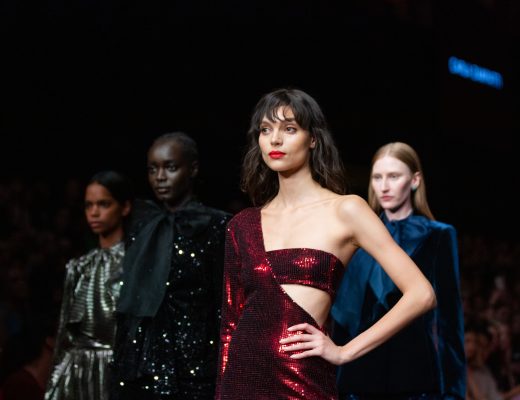Frida Kahlo is not only ridiculously cool, she shifted art’s axis, skewing our gaze beyond the monumental Masculine onto the complex and visceral realities of the Feminine. Janice Breen Burns meets minds behind the Bendigo Art Gallery’s exhibition Frida Kahlo – In Her Own Image (on now until July 13). Far from an average show, it’s more a compellingly intimate dive into Frida’s inner world, a dip into her psyche and clues to the mechanics of pain and joy in the facades she constructed every day to face the world. (This story first appeared in the arts/culture section Spectrum, Nine Media, The Age/Sydney Morning Herald.)
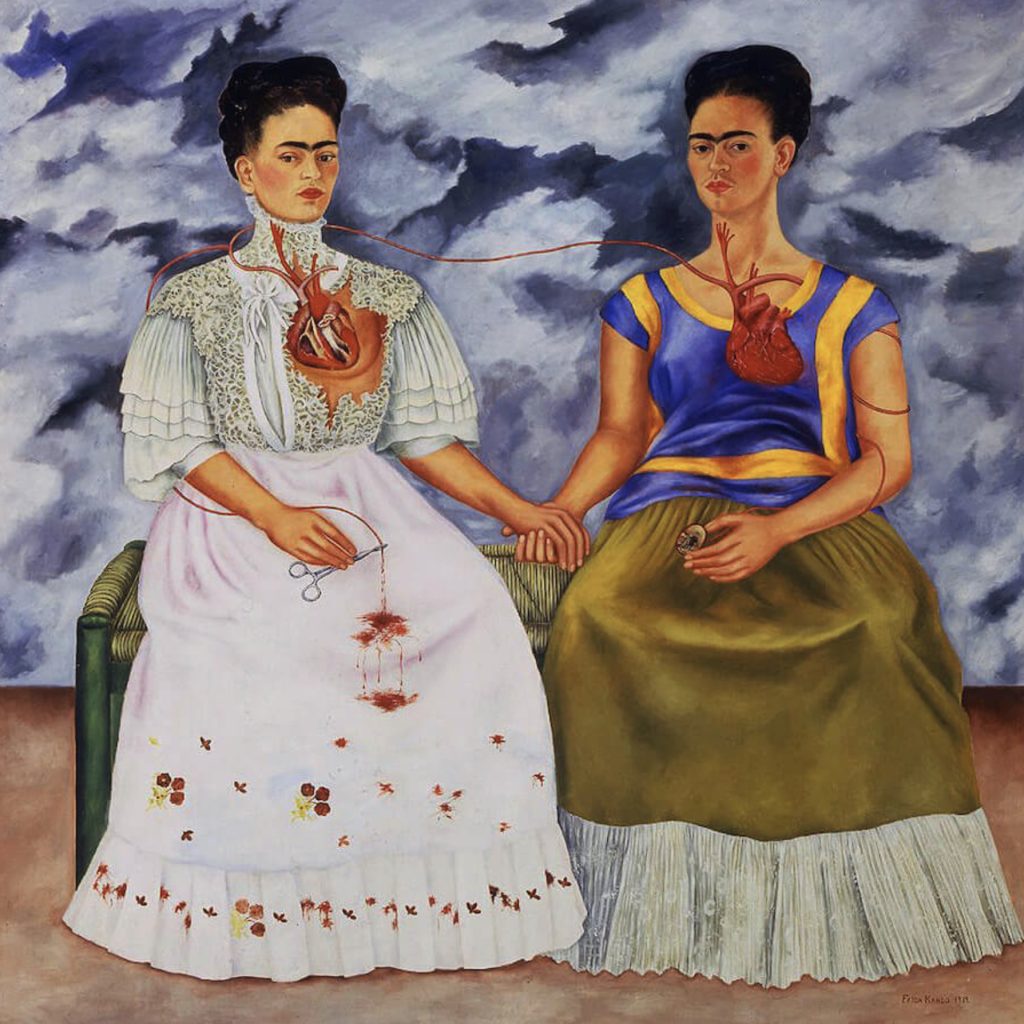
She would be bored of it all by now. Bored, bemused, maybe a bit baffled. I imagine her looking down from her cloud of flowers, Frida The Enigmatic Kahlo, 70-odd years after her own death, still regal in ruffled Tehuana skirt and embroidered blouse, halo of thick braids meticulously coiffed and threaded with fresh marigolds, roses and ribbons, mono-brow elegantly unplucked, soft moustache carefully darkened.
She’s wondering why, so long after her operatic life and the arc of art she painted to record it, we’re still so besotted. Why is Frida Kahlo still so fascinating, so fashionable, so – let’s face it – so cool?
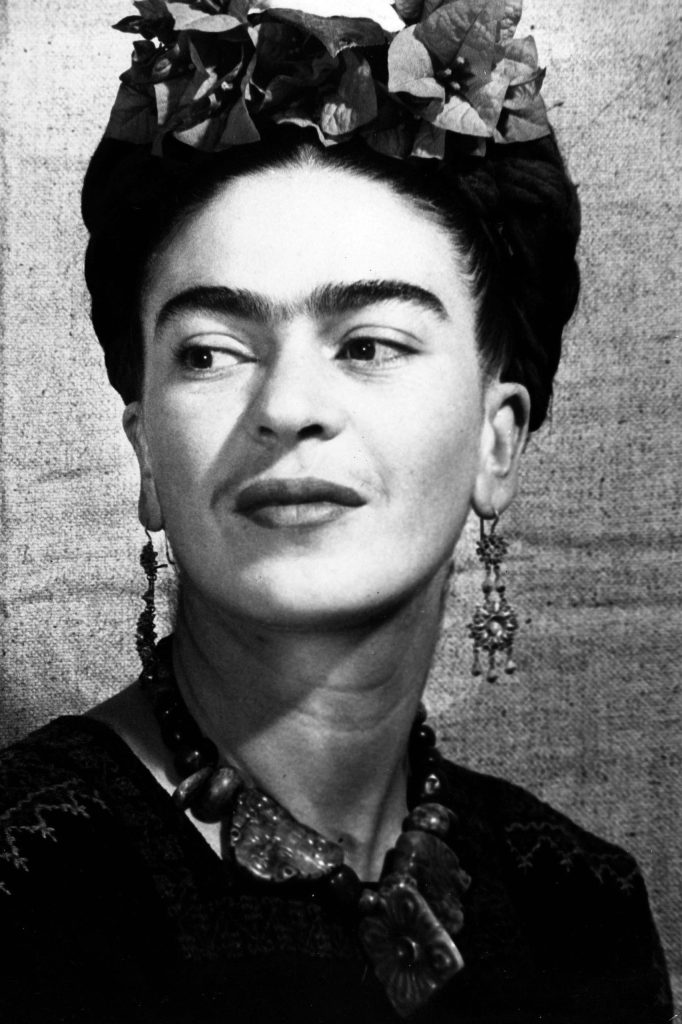
“Frida’s like this great cultural figure who just fits the way we’ve evolved in the 20th and 21st centuries,” says Lauren Ellis, managing curator in Australia of the Bendigo Art Gallery’s exhibition Frida; in her own image. “She lends herself as this sort of heroic figure to movements like feminism, disability pride, queer pride, and all the respect and valorisation we have now for indigenous cultures, anti-capitalist and anti-colonial movements…”
The exhibition is a deep-dive into Kahlo’s psyche through a cache of fashions and personal belongings that, from her death in 1954 until 2004, were sealed into a bathroom at La Casa Azul, The Blue House, her family home and now the Museo Frida Kahlo in Mexico City.
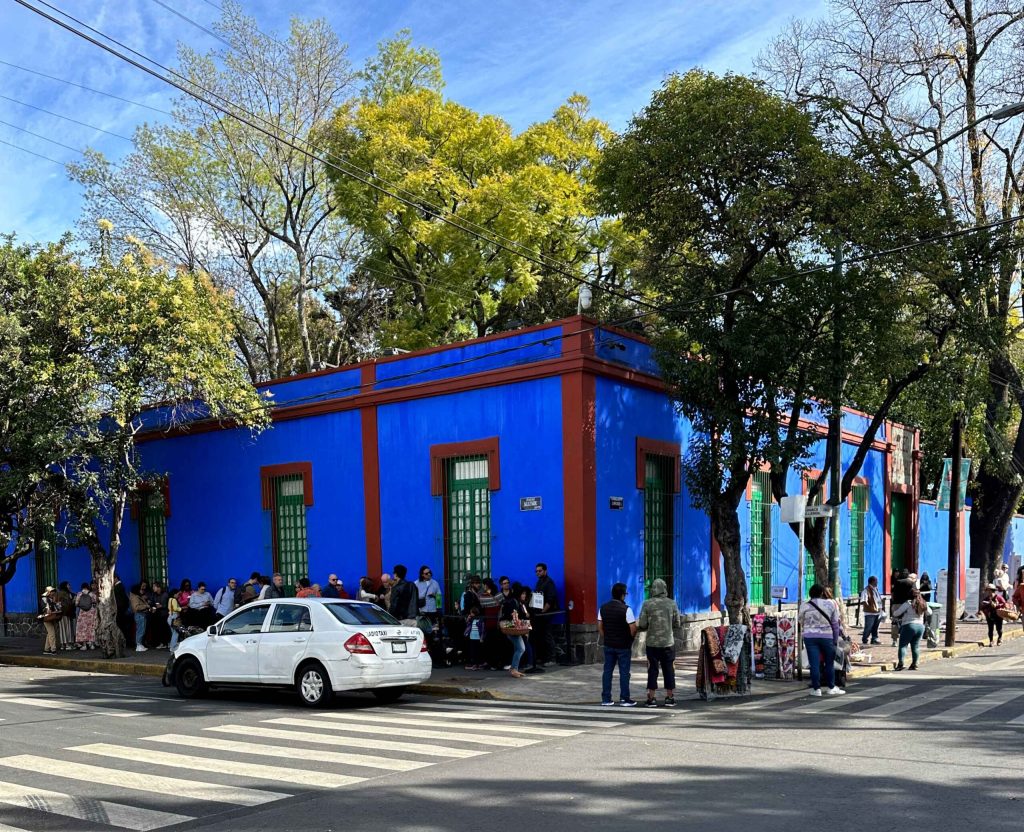
It is curated like a compelling puzzle of Kahlo’s interior and exterior selves; her Mexican trinkets and Tehuana blouses, ruffled skirts and shawls, displayed with her medical corsets and gadgets, her Revlon cosmetics (including the ironic “Everything’s Rosy” lipstick, a cheery cherry shade of red), hair ornaments and jewels including neck-rings of pre-Columbian jade and stones she gathered and strung herself.
Dotted about are her letters, diary notes, photographs, sketches and a small number of paintings including the rarely traveled “Still Life with Parrot and Fruit” (1951) and even rarer “Self Portrait with Thorn and Hummingbird” (1940) on loan from the University of Texas Harry Ransom Centre.
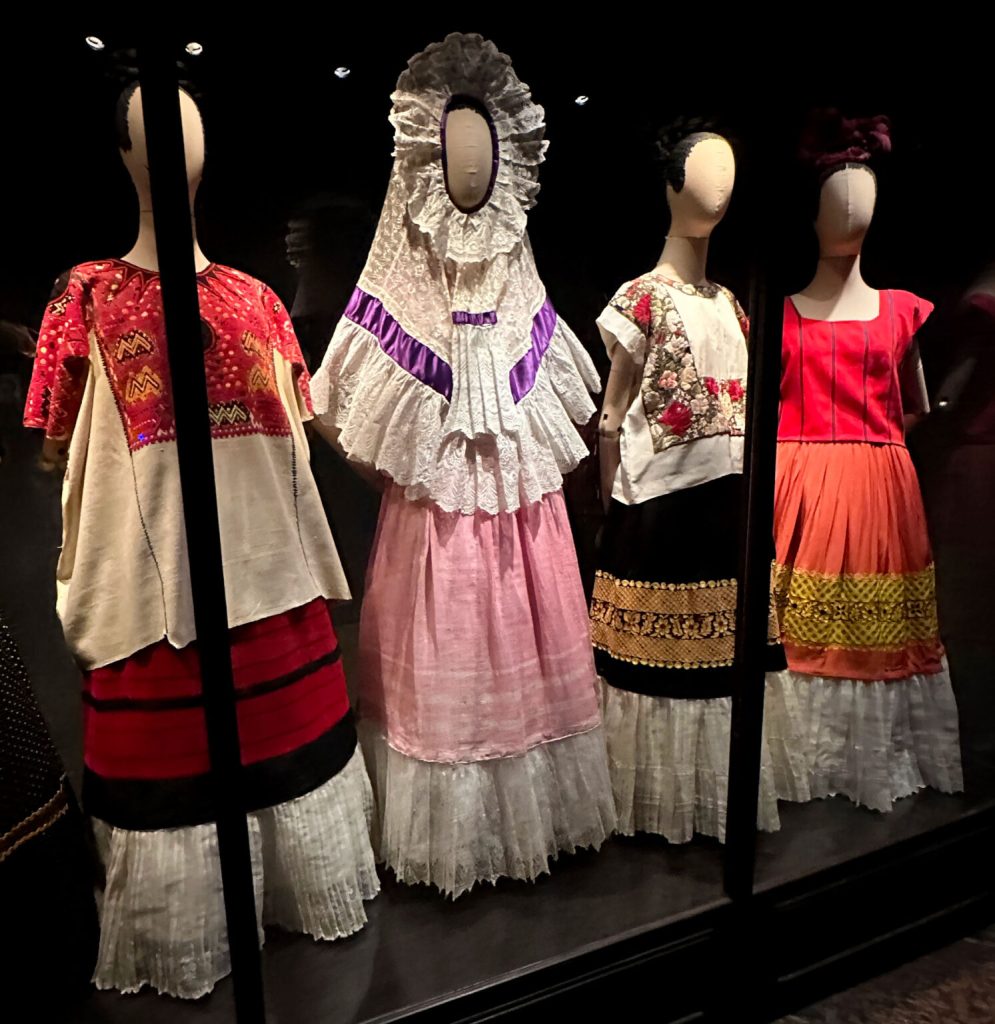
Frida; in her own image tilts at the reasons why Kahlo bubbles away in the public psyche after all this time, even drumming up a fresh batch of fans every generation, hell-bent on plugging in and feeling the person behind the paint.
Women particularly, tune like forks to Kahlo, connecting with the string of tragic blips along her 47 year time line: chronic pain, multiple miscarriages, raging jealousy and obsessive, helpless love for a bloke crucially ruled by his penis.
“Some of it makes me sick and makes me think; ‘I didn’t need to know that’,” British artist Tracy Emin wrote of Kahlo’s art when its visceral feminism was compared to her own in 2005. “Women can relate to her (because) she did images of herself bleeding in the bath, of foetuses coming out of her…she had polio, she had miscarriages, that terrible accident and then a leg amputation…What if she hadn’t had one misfortune after another? She dealt with these blows, but they inspired her. She never sat around feeling sorry for herself….”
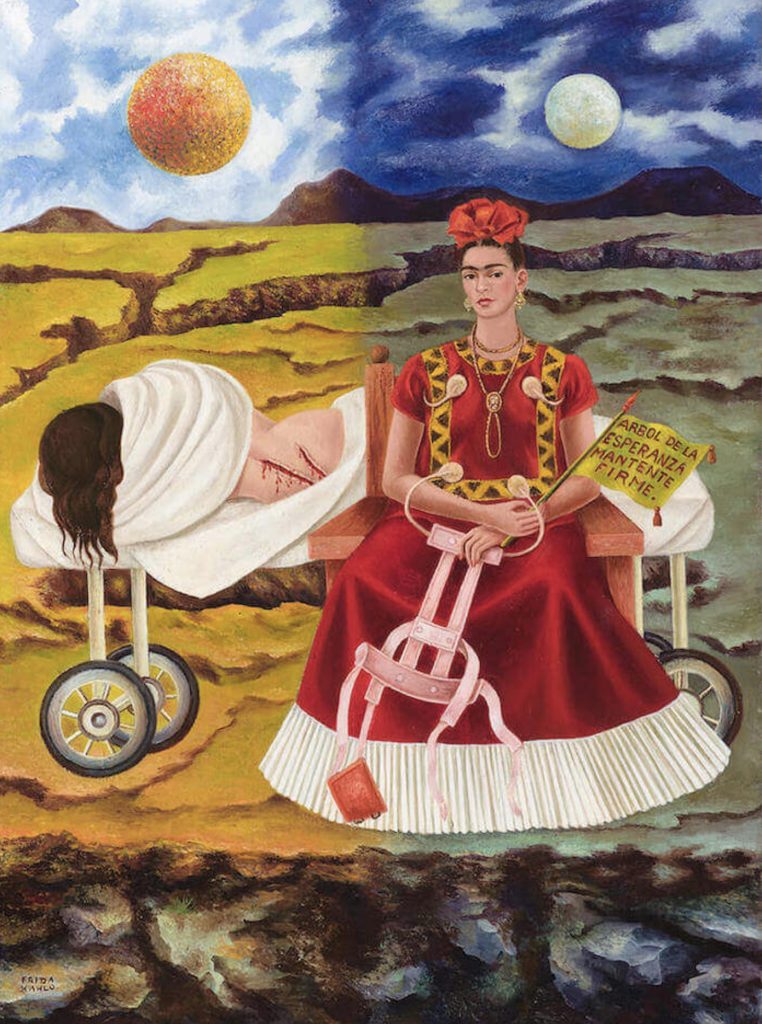
On the contrary, Kahlo constructed a typically womanly disguise – one hesitates to call it “cheerful” – every day. She brushed and braided her hair, put on lipstick and rubbed rouge into her cheeks, buckled her spinal corset under a fresh blouse, skirt and shawl, slipped rings onto her fingers, jewels in her ears, a circle of pretty stones at her throat and – voila – was ready to face the world. Gorgeous.
Hardly surprising, Ellis warns not to expect a garden-variety art show from Frida; in her own image; it’s more an exhibition curated with precisely the elements and tools of that “self-constructed Frida” who faced the world, including her husband’s fans and eventually her own, in Mexico, New York, San Francisco, Detroit and Paris.

“It’s not just a display of someone’s creative output left to speak for itself,” Ellis says “This is a very intimate portrait of an incredibly singular, charismatic and influential personality…”
Prepare to feel Frida’s scale and presence: “The fabrics, so beautiful, soft colours weathered with time…you get this real sense of the woman,” Ellis says, “Her physicality, her daily life..you can even see the cigarette burns, the little flecks of paint…”

Kahlo was born Magdalena Carmen Frida Kahlo to an Hungarian-German dad, a photographer, and Mexican mum in 1907. These days the family home, La Casa Azul is the Museo Frida Kahlo, renowned for the daily queues of devotees snaking down its quiet street in Mexico City.
Childhood polio withered Kahlo’s right leg; tragedy enough, but it was two more, heart-punchingly profound events later that trashed any chance she had of leading a bland, uneventful life.

The first; when she was 18, on the brink of medical studies, a metal handrail speared and shattered her pelvis in a trolley tram crash. A kindly passer-by, it was reported at the time, braced his weight against her body to yank the bar out of her abdomen as she screamed louder than the approaching ambulance.
The second; aged 20, Kahlo took the paintings she’d done during months spent flat on her back in hospital then up-side down in bed at home on a mirrored contraption that her mum had made, to be evaluated by Mexico’s greatest artist at the time, “master muralist” Diego Rivera. “I’m not here to flirt with you,” she told him bluntly. He didn’t; they fell in love and married anyway.

“Kahlo is like us all,” says curator Circe Henestrosa, “Whoever you are, whatever you have suffered; discrimination or drug abuse or infidelity or disability…the way Kahlo overcame adversity and trauma with her creativity is a powerful message. Trauma will not define her…”
Henestrosa, who is also head of Singapore’s LASALLE College School of Fashion, conceived and curated Frida: in her own image and co-curated earlier exhibitions including Frida Kahlo: Making her up at London’s Victoria and Albert Museum in 2018 and Appearances Can Be Deceiving: The Dresses of Frida Kahlo at Museo Frida Kahlo in Mexico in 2012.
Frida Kahlo is Henestrosa’s life work, subject of her masters, PhD and ongoing research and, a more passionate devotee with more remarkable bona fides, would be tricky to find.
On a Zoom screen from Singapore, she shares a black and white photograph of her paternal aunts with Kahlo at La Casa Azul in the 1930s, all wearing identical traditional huipile tunic blouses and ruffled skirts. “My aunties were indigenous women from the Tehuantepec Isthmus and they used to actually bring her these dresses,” says Henestrosa. She believes it was a powerful, deliberate fashion choice by the naturally feminist, politically communist Kahlo. “She adopted this dress from a matriarchal society…At a time when fashion was dictated by Paris she chooses this dress that makes her look very Mexican, from a society of powerful women…in that way she was ahead of her time…”

In her reseach, Henstrosa joined dots and deciphered deep meanings between Kahlo’s art and the medical prosthetics and clothes, jewellery, make-up, she used – all on display at Frida: in her own image – to fashion her public persona every day. “All those very deliberate, very careful decisions she made around her appearance,” Henestrosa says, “Manipulating that visual impact..we can see how she is unveiling the layers of herself, her identity….”
Henestrosa admits her obsession began with a flimsy sketch, drawn by Kahlo and sealed, until 2004, behind a small white cabinet in a bathroom at La Casa Azul. “We see Kahlo’s naked body with her right leg significantly thinner than the other and her left leg with butterflies drawn on it to signify health and transformation. We can see her (medical) corset and her broken (spinal) column and we can see the Tehuana (traditional Mexican) dress like a silhouette around her body. She called this sketch, “Appearances can be deceiving” and it gave me everything…”

For Henestrosa, it was a powerful symbol of Kahlo’s control of her own narrative, what she concealed, what she revealed, and how her art and life were often contradictory, but both turgid with in-plain-sight clues to woman she was. “The main thing I found; she defined herself in her own terms…”
“I have only ever painted the honest expression of myself,” Kahlo wrote near her end, as if that were summary enough of her oeuvre. In fact she had painted – and revealed in letters, diaries and doodles – myriad “selves” as her life progressed and ultimately, spectacularly, fragmented.

If we lined them up, these Frida selves, the first would surely be the confusingly beautiful Frida we all know, in her shawl and flowers, moustache and monobrow, giving zero tosses that her androgyny is way off to the left of patriarchal ideals. Henestrosa says this Frida’s unique beauty is her own deliberate, brilliant invention, forensically composed, a system of visual trickery she’d perfected since childhood. “The composition of her dress, her adornment; notice it is all concentrated from the torso up…” she says. “She is distracting you from her wounded legs and her wounded body….”
Next, the Fashionable Frida was admired for her off-beat, ethnic glamour from New York to Paris. “Mexico is in style now,” Kahlo wrote smugly from her first visit to the US as the intriguing “Signora Rivera”. “Their jaws drop.”

Decades before it was a thang, Fashionable Frida dressed to express her complex identity, posthumously inspiring myriad replicants and designers – even to this day – as diverse as Jean Paul Gaultier and fast fashion chain Zara. This Frida was also, however, bafflingly anti-fashion, a witheringly vicious scoffer about idle women, especially those, “with too many frocks”.
Bi-sexual Frida was the languidly promiscuous, soon-bored lover of artistic, intellectual women and powerful men, a list that is rumoured to range from Parisian dancer Josephine Baker to elderly Russian revolutionary Leon Trotsky. (Six months in to that liaison and she wrote: “I am so bored with this old man….”)
Political Frida was the erudite friend of iconic academics, artists and intellectuals, a Communist so passionate she changed her birthdate to chime with the start of the Mexican Revolution. “What she was, was unpretentious, humorous, self-deprecating and likeable,” says Ellis. “She defied polite social conventions, would use this tough, anti-intellectual language and scandalise people to a degree, but also delight them.”
Frida the feminist, in the earliest days of her romance with Diego Rivera, did not appear feminist at all. Today, that younger Frida might even fit the classic profile of victim in an exploitive power imbalance and trigger a tornado of “Blink if you need help, Frida” comments were she to post her wedding photos on Instagram.

In 1929, however, the marriage of a strikingly younger, smaller Frida “…petite, bird-like Signora Rivera…” to her 20-years-older soulmate, the portly, pillow-lipped, notorious womaniser Diego Rivera, was barely remarked except for this comparison, noted in her own diary: “Everyone said it was like marrying an elephant to a dove..”
Their equality and genuine love, however, was undeniable. Rivera affectionately called Kahlo “dog face”, she flipped back “toad face” or “fat belly” but also wrote in her diary, “I love you more than my skin”. In the wake of his affairs, including one with her beloved sister she depaired, but clung on: “I spend my days crying with rage..”
The lovers’ outward, glamorous life eclipsed more wretched secrets, including the disabled Frida, wracked by chronic pain, submitting to countless surgeries and suffering four doomed pregnancies because of her injuries. “I am fucked because of the accident,” she wrote, “I feel like hell, exhausted by the constant pain…”

Henestrosa believes it is this Frida, the mother of unborn children, who speaks most compellingly to women. “By 1932 we’re sure nobody had ever depicted an abortion scene…that’s when she became the taboo-breaking artist we know today,” she says. “While male artists at the time were working on these big format, big mural paintings, she was portraying, on these small, small paintings, the female body, the experience of miscarriage, the vaginal blood, the heartbreak…only women can understand a painting like that…”
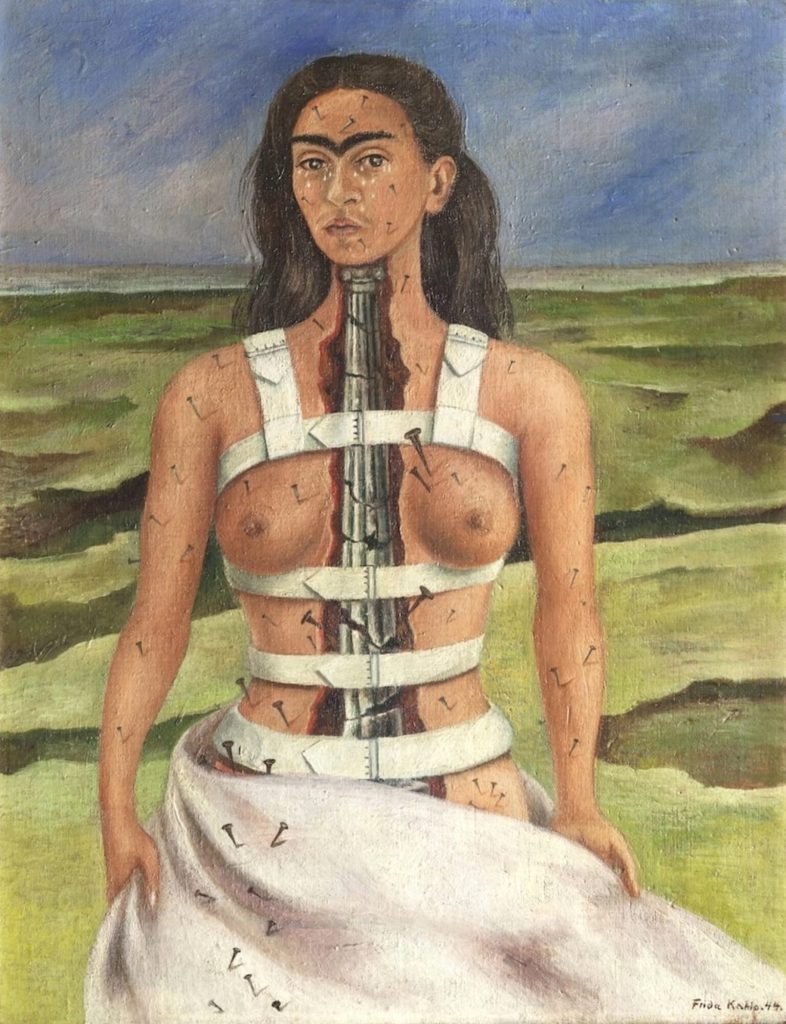
The cult of Frida Kahlo blossomed beyond women. She has been claimed and canonised by almost every social minority, many of them under threat in the current global stampede to right-leaning politics. According to Henestrosa, the clues to Kahlo’s inner life in her art and Frida: in her own image are a powerful message, respite for anyone marginilised, fearing the future. “Look carefully; if you are not a Frida devotee already, it’s likely you will be.”




